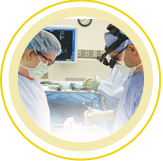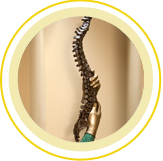Uneven shoulders and waist, one hip higher than the other, and a shoulder blade being more prominent than the other are all early signs of scoliosis. It can be hard to detect at first, but once diagnosed should be monitored as the more serious cases can lead to lung and heart damage. Here’s an overview on the types of scoliosis, what to watch for, and when to see Spine & Scoliosis Specialists.
Congenital Scoliosis
Congenital scoliosis develops before birth. Usually this occurs when the vertebrae do not develop fully in the womb or do not form at all. This causes the spine to grow in an uneven and abnormal manner, and so infants are thus born with congenital scoliosis.
Early Onset Scoliosis
In the case of early onset scoliosis, the spinal curve becomes obvious between birth and age 10. There does not seem to be any identifiable cause, and sometimes this type of scoliosis can “self correct” itself over time. When it becomes more pronounced, children with early onset scoliosis may need intensive treatment.
Boys seem to be more susceptible to this condition in their younger years, whereas more girls show signs as they get closer to age 10.
Adolescent Idiopathic Scoliosis
Idiopathic is defined as something with no known cause. This type of scoliosis is identified as a change in the shape of the spine as a child grows. With adolescent idiopathic scoliosis (AIS), the spine grows sideways and twists at the same time. The ribs can be out of alignment causing a hump on one side, which usually becomes noticeable between the ages of 10 and 18.
Family history may play a role in the chances of a particular person developing this type of scoliosis, and it seems to be more common in girls. Getting an early diagnosis from Spine & Scoliosis Specialists can simplify treatment in the long run.
Degenerative Scoliosis

This type of scoliosis occurs in adults who often already have a history with other variations of scoliosis. Degenerative scoliosis is attributed to aging and weakened bones, which cause the spine to slowly collapse over time in addition to dramatically increasing the “S” shaped curve of the spine.
This condition can also present in adults over the age of 50 due to wear and tear of the joints and discs degenerating causing a curve in the spine.
Neuromuscular Scoliosis
This type of scoliosis can develop due to injury or illness. Cerebral palsy and spina bifida are neurological conditions of the spine which can lead to neuromuscular scoliosis.
Muscular conditions like Duchenne MD or spinal muscular atrophy stop the muscles around the spine from working properly, which can be another common cause of scoliosis.
Each of these conditions can cause the spine to collapse and create a long “C” shaped scoliosis. Because these are progressive conditions, they will continue to develop, especially during growth spurts as an individual transitions through puberty, and can increase the deterioration.
Scheuermann Kyphosis
This occurs during childhood when the front sections of the vertebrae grow more slowly than the back. Scheuermann kyphosis results in a wedge-like shape that usually forms between age 10 and 15, and can become worse as an adult. The condition is associated with symptoms such as back pain in teenage years, which usually decreases with age.
Syndromic Scoliosis
A sideways curve of the spine is part of a syndromic scoliosis or a condition comprising lots of symptoms. In some cases, the patient may be immobile from this condition and so seating aids, a spinal cast, or surgery may be recommended.
How Do You Cope With Scoliosis?
There are multiple ways to treat scoliosis including pain management, corrective posture, physical therapy, adaptive aids, and surgery. Getting an early diagnosis is key. Contact Spine & Scoliosis Specialists if you suspect scoliosis in one of your children or yourself.
As always, if you have any further questions or would like to schedule an appointment, please call 336.333.6306 or request an appointment online today!



